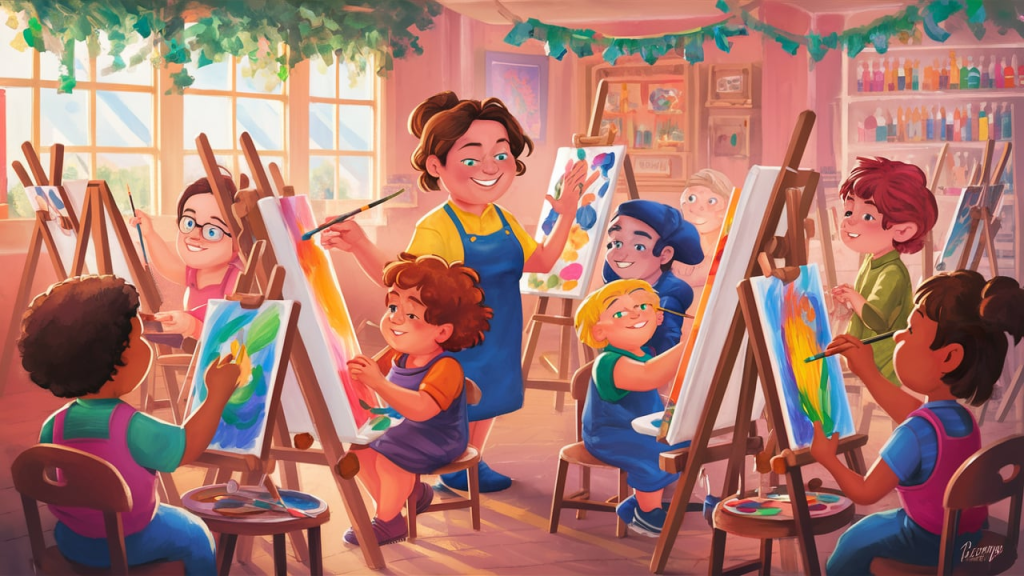Teaching painting to beginners can be a fun and rewarding experience. It allows you to share your love for art while helping others learn new skills.
For beginners, starting with the basics is key to building their confidence and understanding of painting.
This guide will provide simple tips and methods that can make teaching painting easy and enjoyable. From choosing the right materials to introducing basic techniques, I’ll cover everything you need to know.
You’ll also find advice on how to keep your lessons engaging so beginners stay excited about learning.
With these easy steps, you can create a positive and supportive environment where new artists can grow and explore their creativity.
Why Teach Painting?
Teaching painting offers numerous benefits, not just for the students but for the teacher as well. Painting is an excellent way to help individuals tap into their creative potential and build their artistic skills.
Whether someone wants to pursue art professionally or enjoys expressing themselves, painting is a skill that provides a lot of room for growth and discovery.
One of the most important reasons to teach painting is that it encourages personal expression. It allows people to communicate emotions and ideas without the need for words.
Learning to paint can help beginners build confidence, overcome challenges, and develop problem-solving skills.
It also allows them to explore new ways of thinking and perceiving the world.
For teachers, it can be incredibly rewarding to watch students progress from feeling unsure about their abilities to confidently creating their artwork.
What Makes Painting a Great Skill for Beginners?
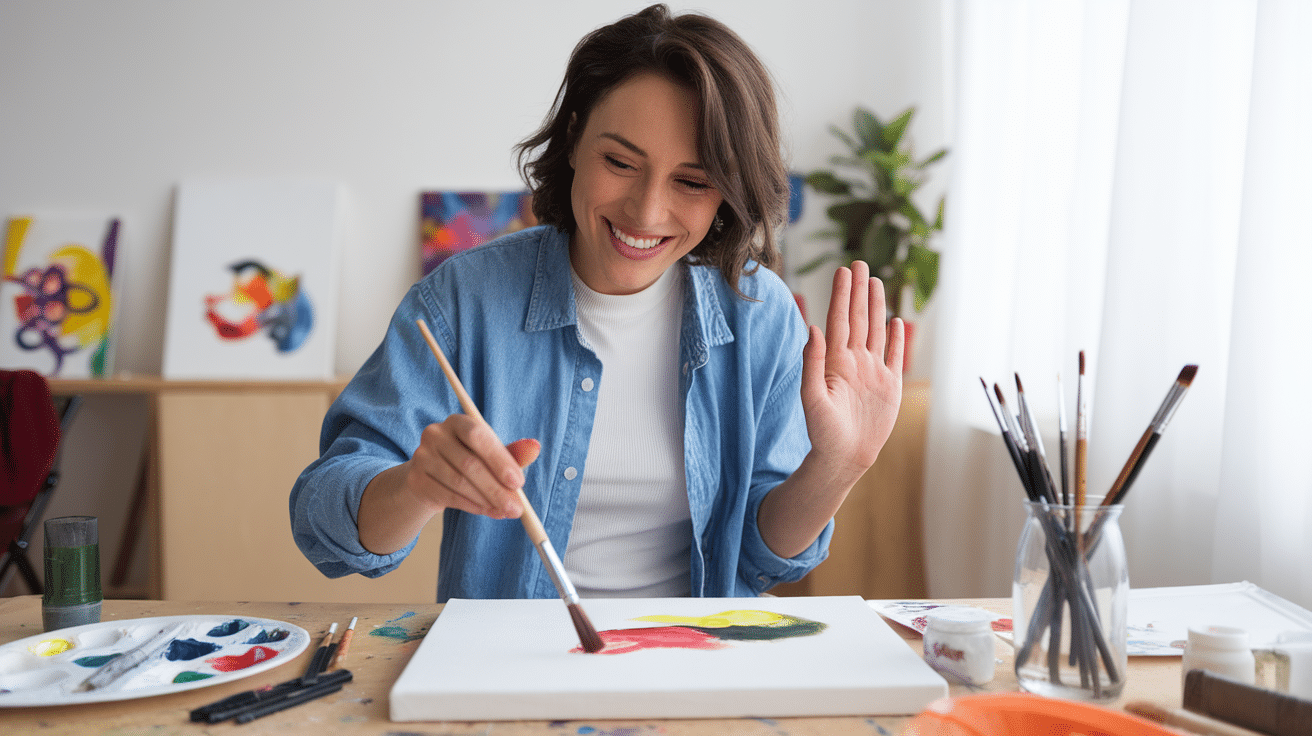
Painting is an ideal skill for beginners for several reasons. First, it doesn’t require years of technical training to get started.
The basics of painting—such as learning how to hold a brush, mix colors, and make simple strokes—can be learned fairly quickly, allowing beginners to start creating art almost immediately.
Another reason painting is great for beginners is the wide range of techniques and styles to explore.
Even if a beginner is interested in realism, abstract art, or something in between, they can experiment with various approaches at their own pace.
Painting also offers flexibility in terms of materials, making it easy for beginners to choose supplies that suit their budget and preferences.
How to Teach Painting to Beginners
1. Start with the Basics: Why Paint?
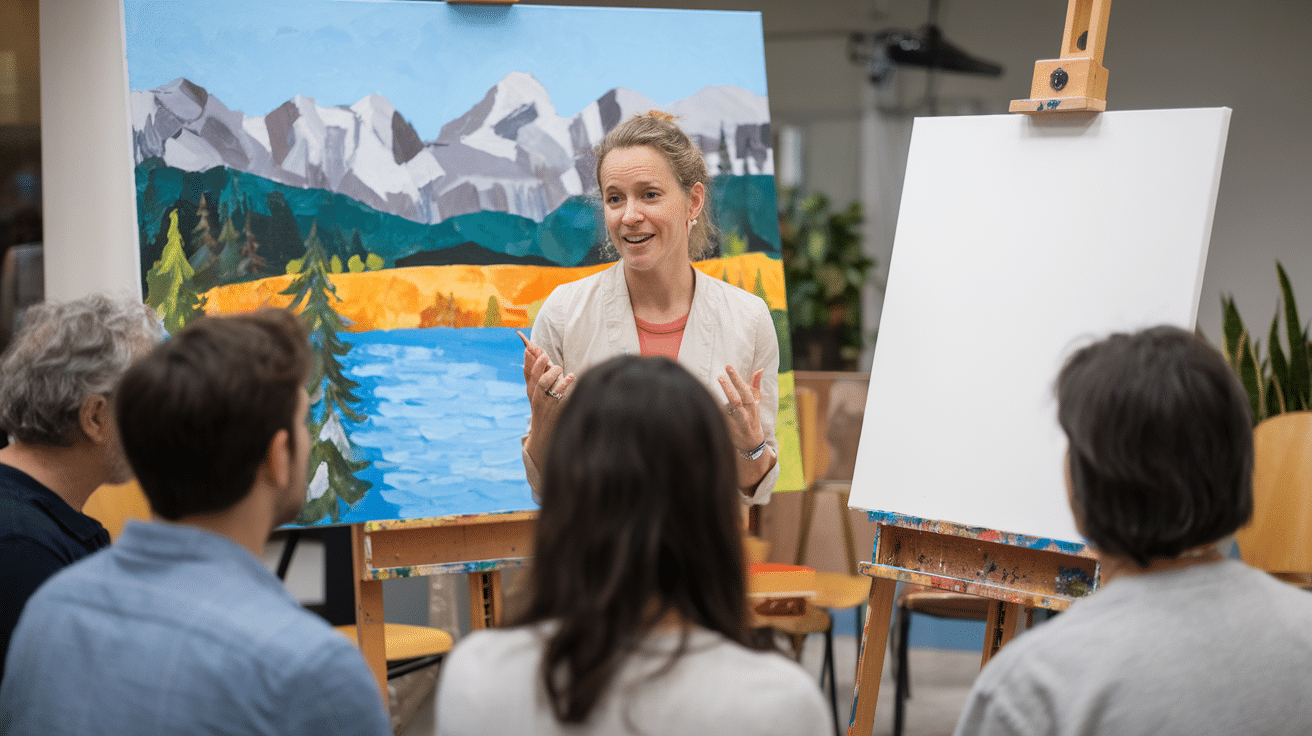
Before jumping into techniques, it’s essential to explain to beginners why painting is such a great form of art.
Painting helps people express their thoughts, feelings, and ideas in a creative way. It can also be relaxing, fun, and even therapeutic.
When teaching beginners, remind them that making mistakes is part of the learning process and that the goal is to enjoy the experience rather than focus on perfection.
2. Choosing the Right Materials
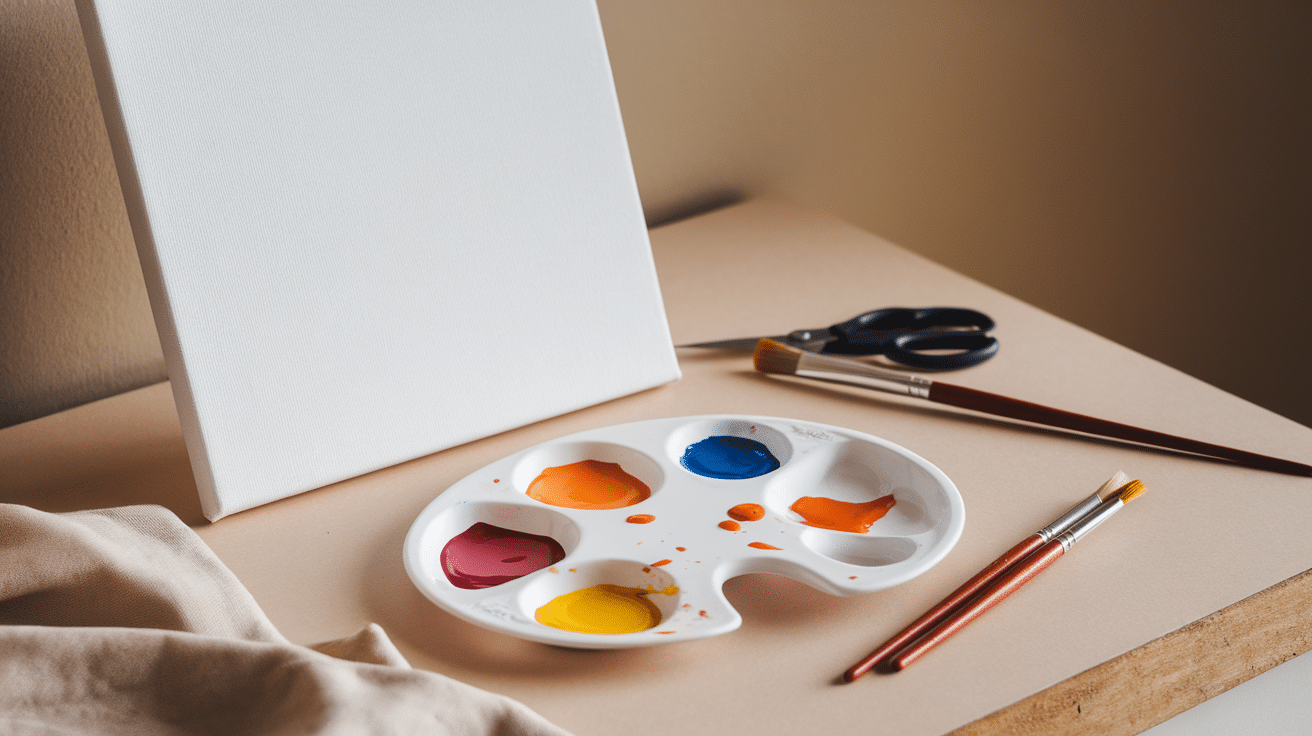
Choosing the right materials is one of the most important steps in teaching painting. Beginners may be overwhelmed by the options available, so it’s helpful to keep things simple. A list of basic materials needed for beginner painting lessons:
- Paint: Start with acrylic paints, which are easy to use, dry quickly, and are not as expensive as oils.
- Brushes: A small set of brushes, including flat, round, and detail brushes, is ideal for beginners.
- Canvas: A simple canvas or canvas board is a great option for beginners. You can also use acrylic paper or watercolor paper.
- Palette: Use a palette for mixing paint. Beginners can start with a disposable palette for easy cleanup.
- Water: Always have water available for rinsing brushes and mixing with paint.
- Palette Knife: A palette knife can be used for mixing paint and adding texture to the painting.
As beginners become more comfortable with painting, they can try different materials, but starting with the basics ensures a smooth introduction to the art form.
3. Teaching Basic Techniques
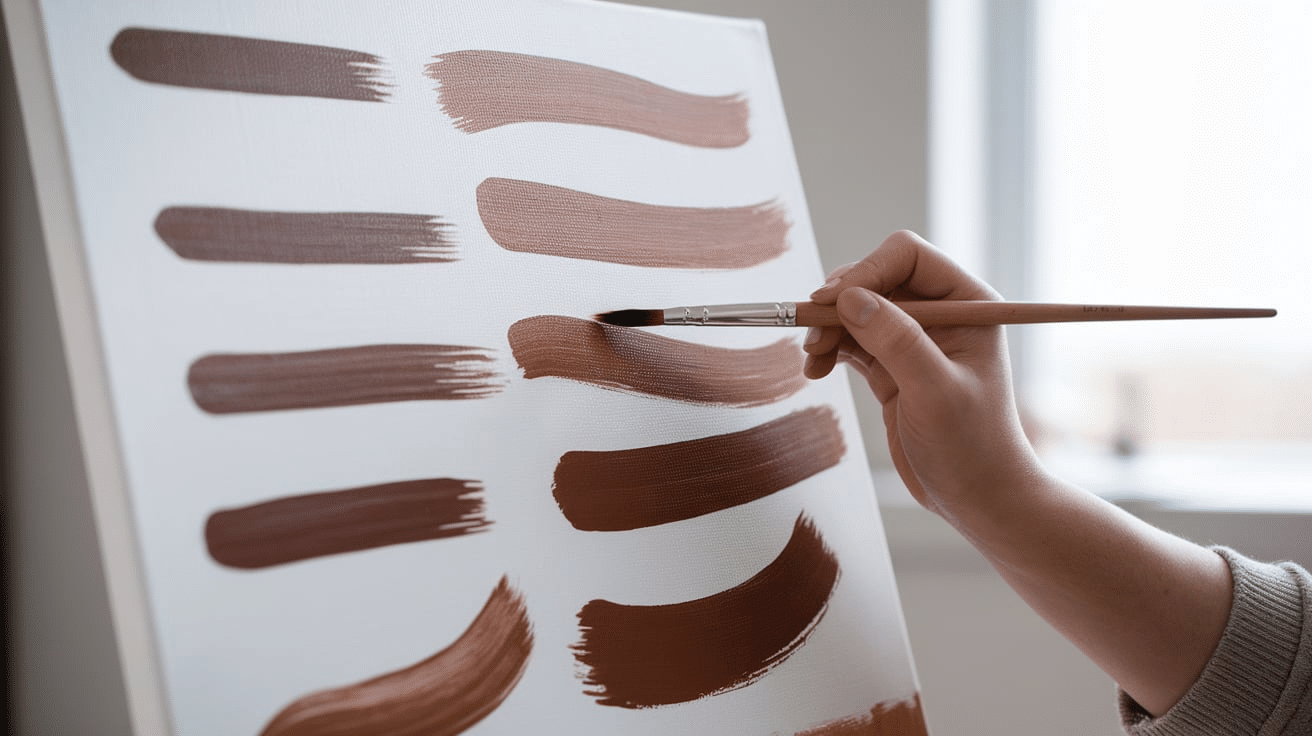
To build a solid foundation, it’s important to teach some of the basic painting techniques.
These techniques will help beginners understand how to control their brushes and how to layer and mix paints.
3.1. Brush Strokes
Brush strokes are one of the first things beginners should learn. Teach them how to hold a brush properly and guide them through different strokes, such as:
- Straight Strokes: These strokes are used for clean, even lines. Encourage beginners to practice making consecutive strokes horizontally and vertically.
- Curved Strokes: These strokes are used to create smooth curves. Show beginners how to apply light pressure to the brush and move it in gentle arcs.
- Dabbing: This technique is used for creating texture. Beginners can practice dabbing their brushes lightly onto the surface to create a soft, bumpy effect.
3.2. Color Mixing
One of the most exciting parts of painting is learning how to mix colors. Start by teaching the primary colors: red, yellow, and blue.
Beginners can create secondary colors like orange, green, and purple from these colors. Show them how to experiment with mixing different amounts of colors to create new shades and tints.
For example, adding white to a color will create a lighter shade, while adding black will create a darker shade.
3.3. Layering Paint
Layering is a key technique in painting that helps create depth and texture. Beginners can start by learning how to apply paint in layers.
Teach them to start with lighter colors and build up to darker colors. This will help them create dimension in their paintings.
Encourage them to wait for each layer to dry before adding the next to avoid blending unwanted colors.
3.4. Creating Texture
Texture adds interest to a painting. Show beginners how to create different textures using their brushes, palette knives, and even sponges.
Please encourage them to experiment with various techniques, such as using a dry brush for a rough texture or a palette knife for thicker, more textured strokes.
Texture can be added to any part of the painting, from the background to the focal points.
4. Teaching Composition
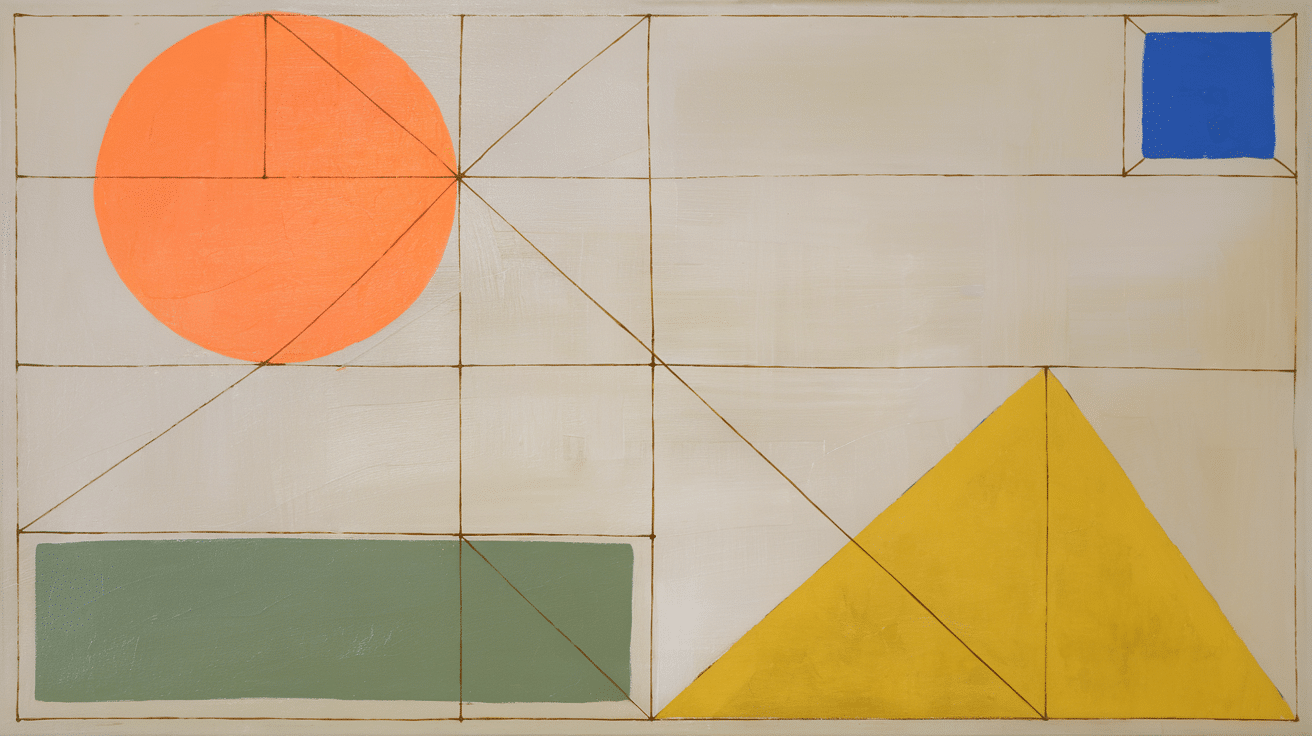
Composition is the arrangement of elements in a painting. It’s important to teach beginners how to create a balanced and pleasing composition.
4.1. Rule of Thirds
The rule of thirds is a simple way to break up a composition into nine equal parts. Imagine two vertical and two horizontal lines creating a grid on the canvas.
The most important parts of the painting should be placed where the lines intersect or along the lines themselves. This creates a more balanced and visually appealing composition.
4.2. Focal Point
Every painting should have a focal point, the part of the artwork that draws the viewer’s attention.
Teach beginners how to create a focal point by using contrast, color, or size. For example, a bright color placed in the center of the canvas will naturally draw the eye.
4.3. Space and Balance
It’s important to leave some empty space in a painting to give the eye room to rest. ‘
Encourage beginners to balance filled and empty areas to prevent the painting from feeling crowded. Use negative space effectively to give the painting a sense of calm.
5. Encouraging Creativity and Experimentation
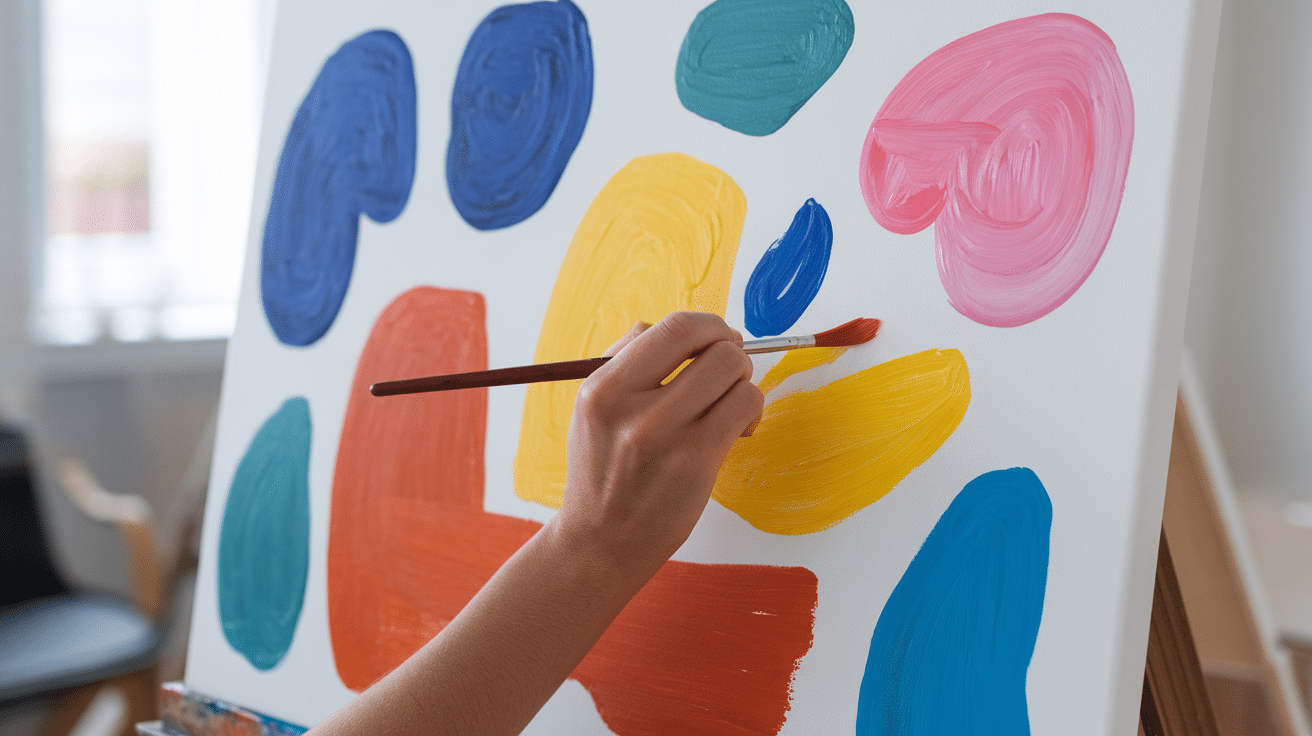
While learning the basics is important, it’s equally essential to encourage creativity and experimentation.
Remind beginners that there are no rules in art. They should feel free to explore different styles and techniques as they continue learning. Some ideas to spark creativity include:
- Abstract Art: Encourage beginners to experiment with abstract art, where shapes and colors take the spotlight over realistic representation.
- Still Life: Setting up a simple still life, like a bowl of fruit or a flower, can help beginners practice observation and focus on details.
- Landscape Painting: Teaching beginners how to paint landscapes can help them practice perspective, blending, and layering techniques.
Allow beginners to explore their creativity and offer positive feedback as they develop their own unique style.
6. Making the Learning Experience Fun
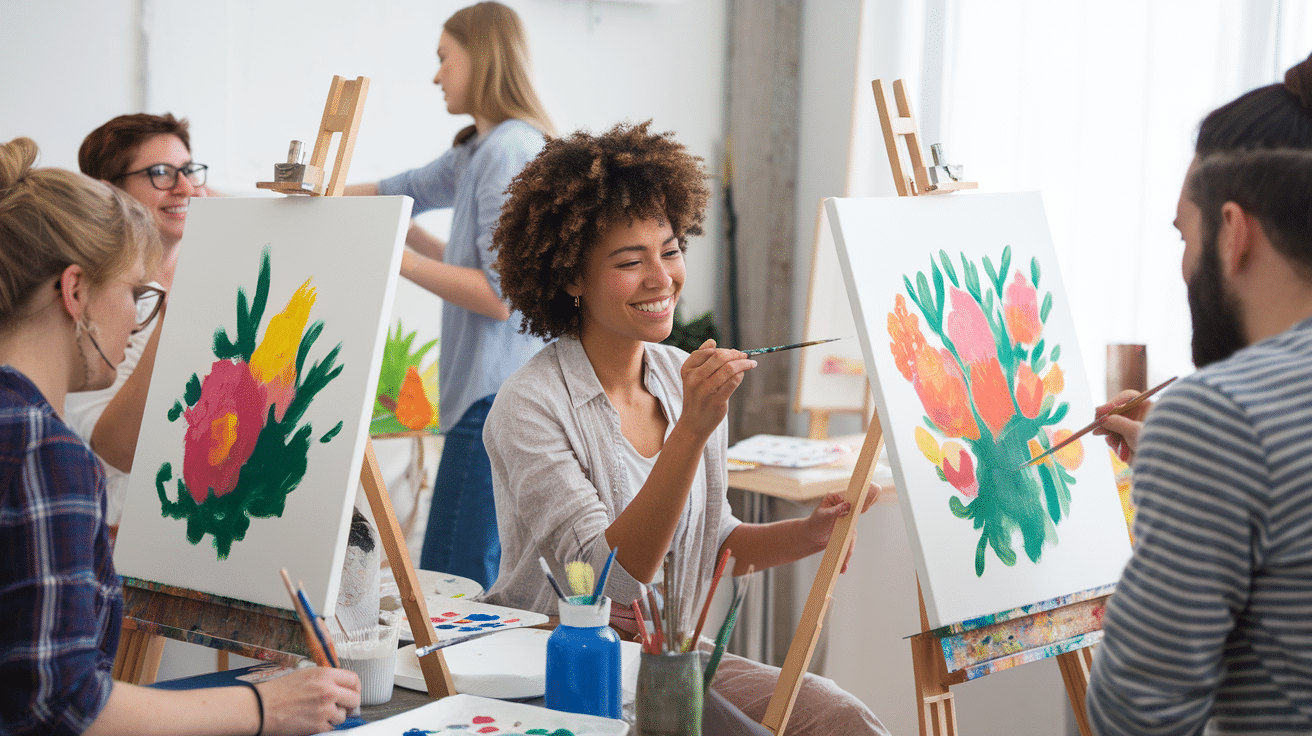
Learning to paint doesn’t have to be a serious task. In fact, making the process enjoyable is key to keeping beginners motivated.
- Use Music: Play calming music during lessons to create a relaxed atmosphere.
- Make It Social: Painting with friends or in a group setting can make the learning experience more enjoyable. Share ideas and celebrate each other’s progress.
- Incorporate Games: Have fun painting games, like timed challenges or collaborative paintings, to keep things lighthearted and engaging.
- Celebrate Progress: Show beginners how much they’ve improved by comparing their early works with their most recent paintings. Celebrating progress can boost their confidence and keep them excited to learn.
7. Handling Mistakes

Beginners may make mistakes, but it’s important to show them that mistakes are part of the process.
Instead of focusing on what went wrong, teach them how to correct their mistakes or even turn them into opportunities for creativity.
Remind them that everyone makes mistakes, and starting over or trying something different is okay. The goal is to learn and have fun, not to create a perfect painting.
8. Providing Constructive Feedback
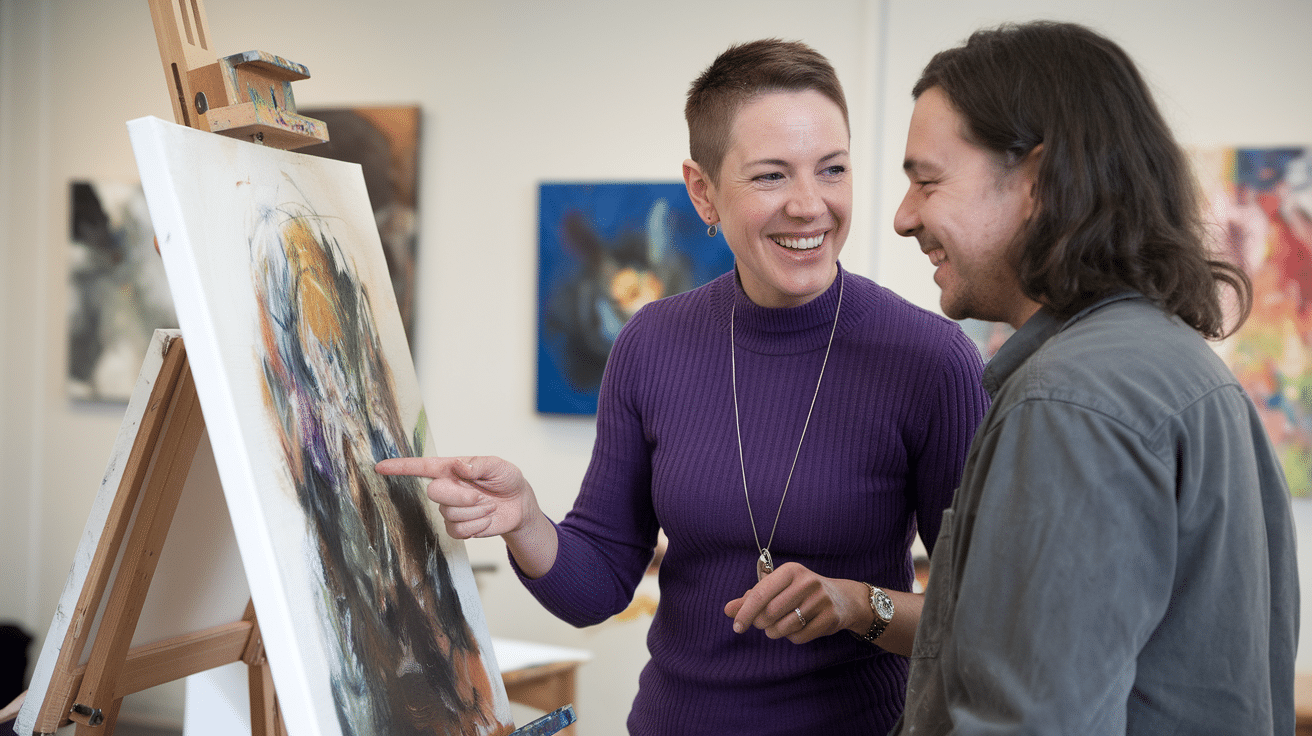
As a painting teacher, your feedback plays a crucial role in helping beginners improve.
Make sure to give constructive feedback by pointing out what they did well and offering suggestions for improvement. Be specific and positive in your comments.
For example, instead of saying, “This doesn’t look good,” say something like, “I like the way you blended the colors here. Next, try adding more contrast in the shadows to create depth.”
9. Keeping Students Motivated
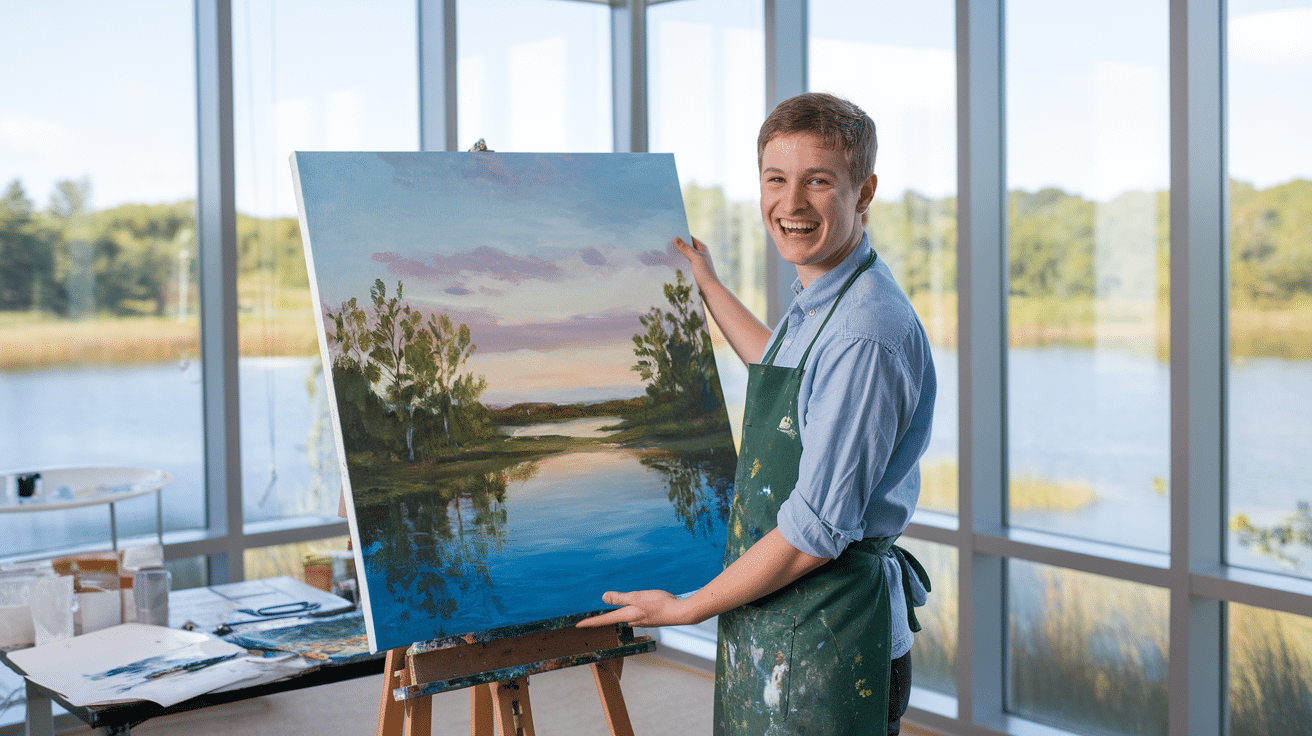
It’s important to keep beginners motivated as they learn painting.
- Set Goals: Help beginners set small, achievable goals for each lesson. This could be finishing a painting or mastering a specific technique.
- Show Inspiration: Share famous paintings or works from local artists to inspire beginners and show them the possibilities.
- Celebrate Successes: Celebrate when beginners finish a painting or reach a milestone. This can be done through praise, display, or even a small exhibition.
How Painting Benefits Mental Health
Painting offers several mental health benefits, making it an effective way to improve emotional well-being.
- Reduces Stress and Anxiety: Painting helps reduce stress by allowing individuals to focus on their art, calming the mind, and promoting relaxation. The repetitive actions of painting can release tension and create a sense of peace.
- Improves Focus and Concentration: The concentration required for painting can improve focus and mental clarity. Beginners often find that creating art helps sharpen their attention and boost overall concentration.
- Promotes Emotional Expression: Painting gives individuals a non-verbal outlet to express their emotions. It allows beginners to release feelings like sadness or frustration, providing emotional relief and self-awareness.
- Boosts Self-Esteem and Confidence: Completing a painting provides a sense of accomplishment, increasing confidence and self-esteem, helping beginners feel proud of their progress.
Conclusion
Teaching painting to beginners is a rewarding experience that allows people to unlock their creativity and explore new ways of expressing themselves.
By focusing on the basics, like understanding colors, brush techniques, and composition, you can help beginners build a strong foundation.
Learning to paint can be fun and therapeutic, offering a great way to reduce stress, improve focus, and boost confidence. As a teacher, your role is to create a supportive and encouraging environment that makes learning enjoyable.
Remember, mistakes are part of the learning process. Encourage beginners to experiment and enjoy their journey.
The benefits extend beyond the canvas, helping beginners feel more confident and connected to their emotions. Keep teaching, and you’ll inspire others to appreciate the value of art.
Frequently Asked Questions
What type of painting is easiest for beginners?
Acrylic painting is often the best choice for beginners because it dries quickly, is easy to clean up, and offers plenty of flexibility in techniques. Watercolor and oil painting are also options, but acrylics tend to be less complicated.
How can I help beginners improve their painting skills?
Start with the basics, like color mixing and brush control. Encourage regular practice and creativity, and provide positive feedback to build confidence.
How long does it take to learn painting?
The time to learn varies by person, but beginners typically see progress within a few weeks or months of consistent practice.
Can painting help with stress or anxiety?
Yes, painting can be therapeutic. It helps to relax the mind and express emotions, reducing stress and promoting a calm, focused state.


